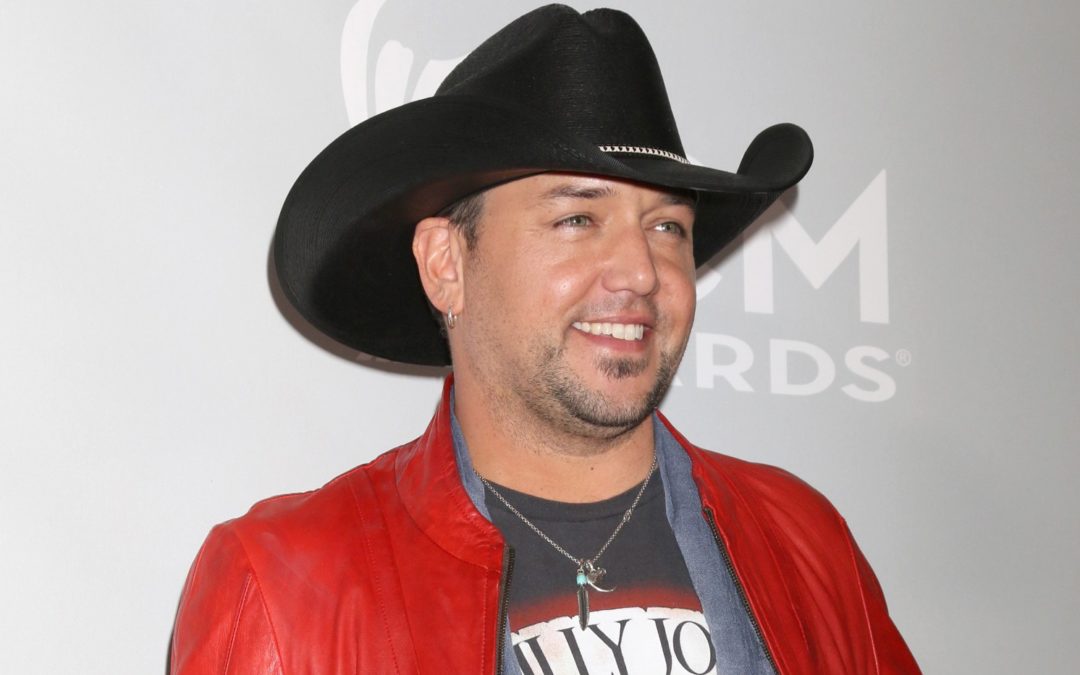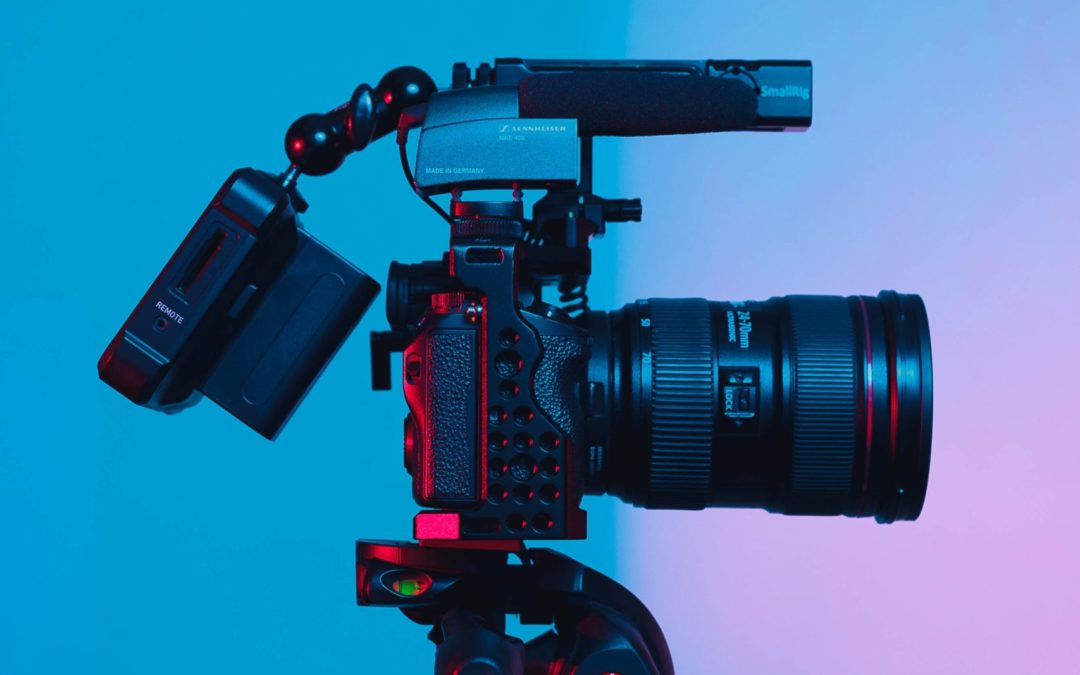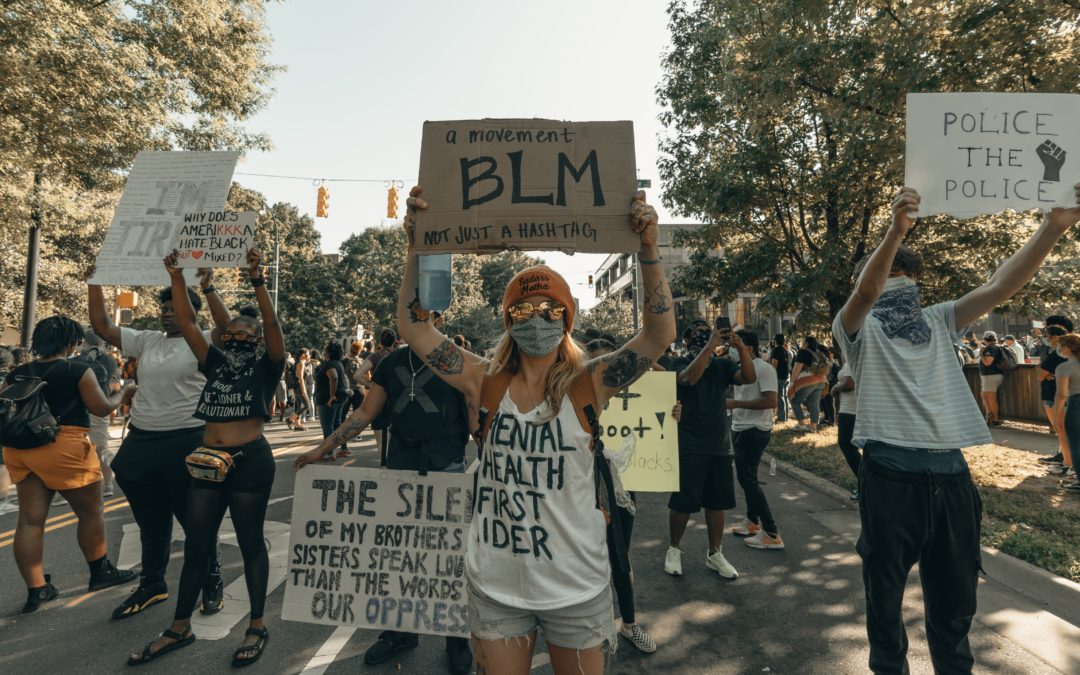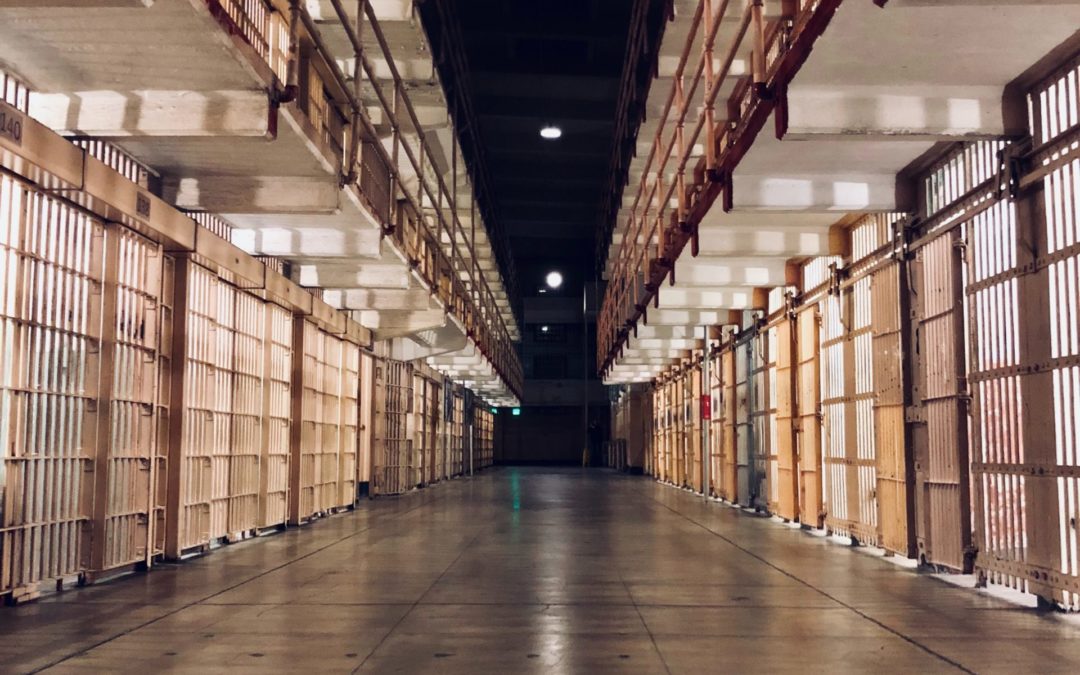
by Jonathan P-Wright | Aug 4, 2023 | Latest, Social Justice |
In the midst of a growing storm of controversy, country music artist Jason Aldean has taken a significant step to address the outcry surrounding his latest single, “Try That In A Small Town,” by releasing an updated version of its accompanying video. This move comes after the original video drew sharp criticism for featuring imagery that many perceived as racially insensitive.
The embattled singer’s updated rendition of the “Try That In A Small Town” video reportedly sees the removal of the contentious footage that projected scenes from the 2020 Black Lives Matter protests onto the Maury County Courthouse in Columbia, Tennessee. The original video, which stoked a firestorm of allegations of racism, depicted a convergence of present-day protests and historical racial tensions, all while Jason Aldean’s lyrics addressed crossing societal boundaries.
Notably, the footage projected onto the Maury County Courthouse held deep historical significance, as it was the very location where a Black teen named Henry Choate was lynched during the 1920s. This juxtaposition, combined with Jason Aldean’s musical narrative, stirred a potent mixture of emotions, ranging from anger to deep sadness, and further ignited conversations about the intersection of art, history, and social consciousness.
The removal of this contentious footage marks a strategic move on Jason Aldean’s part, aimed at quelling the mounting criticism that erupted in the wake of the video’s release. It is reported that the updated version is now six seconds shorter than its predecessor, a subtle but deliberate edit that seeks to minimize the potential for further controversy.
The incident surrounding the original video’s content offers a thought-provoking reflection on the power and responsibility of artists like Jason Aldean to navigate complex social issues through their creative expressions. As conversations surrounding race, identity, and historical awareness gain increasing prominence, the scrutiny faced by Jason Aldean’s video underscores the imperative for cultural figures to be attuned to the sensitivities of their audiences.
As the updated video continues to circulate, its reception will undoubtedly be closely watched. This incident serves as a stark reminder that art, though a vehicle for expression, can wield substantial influence, often transcending mere entertainment to engage with deeply entrenched societal narratives.
The updated video prompts broader discussions about the role of art in shaping perceptions, the complexities of cultural representation, and the evolving landscape of accountability in the age of heightened awareness. Ultimately, the narrative that unfolds around this incident holds lessons for artists like Jason Aldean, audiences, and the ongoing dialogue about the intertwined relationships between creativity, history, and the pursuit of social progress.

by Jonathan P-Wright | Jul 31, 2023 | Latest, Social Justice |
Photo by Sirisvisual on Unsplash
In a bold move against the Los Angeles Police Department, a prominent Black filmmaker is breaking his silence and taking legal action following a disturbing incident involving law enforcement officers. Damien Smith, an acclaimed documentary filmmaker, is shedding light on an encounter with the police in 2021 that left him deeply affected and compelled to pursue justice.
Speaking exclusively with the LA Times, Damien Smith shared his harrowing experience, which he believes was tainted by racial bias. The incident occurred on a fateful day in October 2021 when Smith returned to his apartment only to find an intruder unlawfully holding his belongings. Despite the seriousness of the situation, Smith chose to call 911, believing that justice and safety would be upheld.
However, what followed was an unexpected and distressing turn of events. When the police arrived at the scene, instead of apprehending the intruder, they subjected Smith to multiple taser shocks, leaving him in shock and disbelief. As a filmmaker actively working on a project addressing police brutality, Smith couldn’t help but wonder if there was a racial component to the way he was treated by law enforcement.
Once the officers confirmed Smith’s residency, they promptly released him, but no apologies were offered for the unjust use of force. Meanwhile, the intruder, Demani Coats, was later arrested and convicted of burglary in July 2022, raising further questions about the disproportionate actions taken against Smith.
In response to this traumatic incident and the subsequent lack of accountability, Damien Smith made the difficult decision to file a lawsuit against the Los Angeles Police Department. The lawsuit reflects the physical and emotional toll the encounter had on him, citing injuries to his chest, back, and nervous system, as well as the immense embarrassment and public ridicule he endured.
The allegations against the department are serious, encompassing charges of false arrest, assault, battery, intentional infliction of mental distress, and violation of civil rights. Smith is determined to hold the police accountable for their actions and highlight the urgent need for proper training to prevent similar incidents from happening to others.
For Damien Smith, this lawsuit is not just about seeking compensation or retribution; it is a plea for justice and an urgent call for change. As a filmmaker who has devoted his career to shedding light on social injustices, he now finds himself at the center of the very narrative he has been capturing on film. His courage to speak out against the injustice he experienced is inspiring a broader conversation about the need for comprehensive reform within law enforcement agencies.
The story of Damien Smith resonates deeply with the broader social justice movement, drawing attention to the ongoing struggle for racial equity and accountability in policing. His unwavering commitment to seeking justice serves as a rallying point for those advocating for change and a reminder that there is still much work to be done to achieve a more just and equitable society.

by Jonathan P-Wright | Jul 28, 2023 | Latest, Social Justice |
Photo by Clay Banks on Unsplash
A significant chapter in the fight for justice and accountability has been written as New York City reaches a historic settlement with hundreds of George Floyd protesters who faced unlawful tactics at the hands of local police during the turbulent events of 2020. The proposed agreement, recently filed in a Manhattan federal court, represents a groundbreaking moment, with the city agreeing to pay over $13 million in the largest class-action settlement ever awarded to a group of protesters.
As reported by CNN, a historic settlement has been reached, representing a monumental outcome in response to a class-action lawsuit brought forth on behalf of an impressive number of approximately 1,380 protesters. These individuals were arrested by the New York City Police Department during a series of 18 fervent demonstrations held across the city during the period of May and June in 2020. The successful resolution of this lawsuit stands as a testament to the power of collective action and the unwavering determination of those seeking justice and accountability for alleged misconduct. With this momentous settlement, those impacted by the events surrounding these protests may find solace and recognition, as the legal process takes significant strides towards addressing the grievances and concerns raised during this tumultuous period in the city’s history. The landmark nature of this settlement not only reaffirms the rights and liberties of peaceful protesters but also underscores the importance of holding authorities accountable for ensuring that those rights are upheld and protected in any civil society. This pivotal case serves as a beacon of hope for others seeking redress and serves as a critical milestone in the ongoing journey towards fostering a more just and equitable society for all. The terms of the agreement will provide eligible individuals with compensation of $9,950 each, pending approval by a judge.
The lawsuit sheds light on a series of troubling allegations against the authorities, accusing them of employing aggressive tactics that violated protesters’ rights. Among the accusations were claims of corralling protesters into confined spaces, using excessive force with batons and fists, indiscriminately deploying pepper spray, and arresting demonstrators without lawful justification or fair warning.
The protests of 2020 were a visceral response to the tragic killing of George Floyd by former police officer Derek Chauvin, an event that sent shockwaves throughout the nation and reignited the Black Lives Matter Movement. Hundreds of people from diverse backgrounds united on the streets of cities and towns across the country, standing in solidarity against police brutality and racial injustice.
In the heart of New York City, a powerful wave of voices rose, demanding an end to systemic racism and the urgent need for police reform. The demonstrations were marked by a spirit of unity and a shared commitment to driving societal change. However, the resolve of the protesters was met with an alarming response from law enforcement, who, according to the class-action lawsuit, employed unlawful tactics that violated the constitutional rights of the demonstrators.
The impact of this settlement transcends monetary compensation; it sends a resounding message about the significance of accountability in a just society. By acknowledging and redressing the harm done to protesters, the city of New York takes a crucial step toward recognizing the importance of protecting citizens’ constitutional rights, even in the face of public dissent.
While the road ahead may be long, this landmark agreement offers hope and encouragement to those who continue to advocate for meaningful police reform and an end to racial injustice. As New York City takes this historic step towards healing and reconciliation, it sets a powerful precedent for other cities and communities grappling with similar challenges. The legacy of the George Floyd protests will endure, as the voices of those who took to the streets continue to echo, demanding a future where equity, justice, and compassion prevail.

by Jonathan P-Wright | Jul 27, 2023 | Latest, Social Justice |
Photo by Carles Rabada on Unsplash
The Justice Department has taken a decisive step forward, embarking on a civil rights investigation aimed at delving into the disquieting conditions and alleged instances of violence perpetrated against inmates at Fulton County Jail in Atlanta, Georgia. The move signals the government’s commitment to upholding constitutional rights and ensuring transparency in matters concerning the treatment of individuals in detention. By initiating this investigation, the Justice Department aims to shed light on the circumstances surrounding the reported incidents, seeking accountability for any potential violations and facilitating improvements to prevent future occurrences of mistreatment and abuse.
Attorney General Merrick Garland emphasized the significance of this probe, stating that the Justice Department aims to determine whether systemic violations of federal laws have occurred within the facility.
During a news conference on July 13, Kristen Clarke, the assistant attorney general of the DOJ’s Civil Rights Division, provided insight into the investigation’s scope and objectives. The inquiry was prompted by the tragic death of Lashawn Thompson, an inmate at Fulton County Jail. Thompson, who was in custody for a misdemeanor assault charge, was placed in the jail’s psychiatric wing due to his mental health condition, according to Michael Harper, the attorney representing Thompson’s family.
The allegations surrounding the conditions and treatment of inmates at Fulton County Jail have raised concerns about the facility’s compliance with civil rights standards. The investigation will delve into the reported unsanitary conditions and examine the alleged acts of violence perpetrated against inmates. It represents a significant step towards ensuring accountability and addressing any potential violations of inmates’ civil rights.
By launching this civil rights investigation, the Justice Department aims to uncover the truth and determine whether there have been systemic infringements on the rights of incarcerated individuals. The findings of this inquiry will serve as a crucial foundation for improving the conditions within the jail and holding responsible parties accountable for any wrongdoing.
The death of Lashawn Thompson serves as a somber reminder of the urgent need for reform within the criminal justice system. It underscores the importance of upholding the rights and well-being of individuals in custody, particularly those grappling with mental health challenges. The Justice Department’s commitment to thoroughly investigate the circumstances surrounding Thompson’s death reflects a broader dedication to safeguarding the civil rights of all individuals, regardless of their incarcerated status.
The outcome of this civil rights investigation at Fulton County Jail holds profound implications for the pursuit of justice and the protection of inmates’ rights. As the inquiry unfolds, the Justice Department will scrutinize the practices, policies, and treatment of individuals within the facility to ensure that their constitutional rights are upheld.
The initiation of this investigation should serve as a catalyst for meaningful change and a renewed focus on the fair and humane treatment of incarcerated individuals. The Justice Department’s unwavering commitment to upholding civil rights, even within correctional institutions, sends a powerful message about the importance of accountability and the pursuit of justice. Through this investigation, the department seeks to shed light on any potential violations and work towards rectifying systemic issues to ensure that the rights and dignity of all inmates are respected.

by Jonathan P-Wright | Jul 21, 2023 | Latest, Social Justice |
A Georgia therapy clinic has taken swift action after a disturbing incident involving one of its employees and a Black fisherman went viral. The therapy clinic announced the termination of their business relationship with the employee responsible for the harassment.
The incident, which unfolded on Tuesday (July 11), came to light when Anthony Gibson, an aspiring actor, shared a video of the encounter on TikTok. According to Daily Mail, Gibson, who resides in a Columbus neighborhood, was fishing at a “residents only” lake when neighbors challenged his presence there.
In the viral video, the therapy clinic’s employee, identified as Tanya, is seen confronting Gibson while he peacefully fishes in the neighborhood lake. The encounter quickly escalates, with Tanya harassing and questioning Gibson about his right to be at the location. The video stirred outrage online, with many condemning the actions of the woman and expressing support for Gibson.
As the video gained traction on social media platforms, the therapy clinic faced mounting pressure to address the incident. In response, the clinic released a statement announcing their decision to sever ties with the employee involved. The statement reads, “We have terminated our business relationship with the independent contractor, Tanya.”
The termination of the employee demonstrates the clinic’s commitment to upholding principles of equality, respect, and inclusivity. By taking decisive action in the face of such behavior, the clinic sends a clear message that harassment and discrimination will not be tolerated within their organization.
The incident also shines a spotlight on the issue of racial profiling and harassment faced by Black individuals in public spaces. Gibson’s experience at the “residents only” lake is a stark reminder of the racial biases and prejudices that persist in society, even in seemingly mundane situations.
The video posted by Anthony Gibson serves as a potent example of the power of social media in raising awareness and holding individuals and institutions accountable for their actions. The widespread sharing of the video sparked conversations about racial injustice and discrimination, prompting the therapy clinic to address the situation promptly.
While the termination of the employee represents a significant step in addressing the issue, it also underscores the need for continued efforts to combat racism and promote understanding in communities. The incident serves as a call for increased education and awareness surrounding issues of racial sensitivity and cultural inclusivity.
Moving forward, it is crucial for businesses and individuals alike to actively work towards fostering an environment of mutual respect and acceptance. The therapy clinic’s response to the incident highlights the importance of organizational values that prioritize diversity and equality.
As the video continues to resonate with audiences, it is hoped that the incident will spark further dialogue and reflection on how society can strive towards a more inclusive and compassionate future. In standing against harassment and racial profiling, we can collectively work towards building a society that embraces diversity and celebrates the richness of different cultures and backgrounds.
The therapy clinic’s decision to terminate the employee involved in the harassment incident is a step towards accountability and sends a powerful message about their commitment to creating a safe and inclusive environment for all. This action reaffirms the importance of standing up against racism and discrimination, and serves as an example for other organizations to follow in promoting positive change.








RECENT COMMENTS